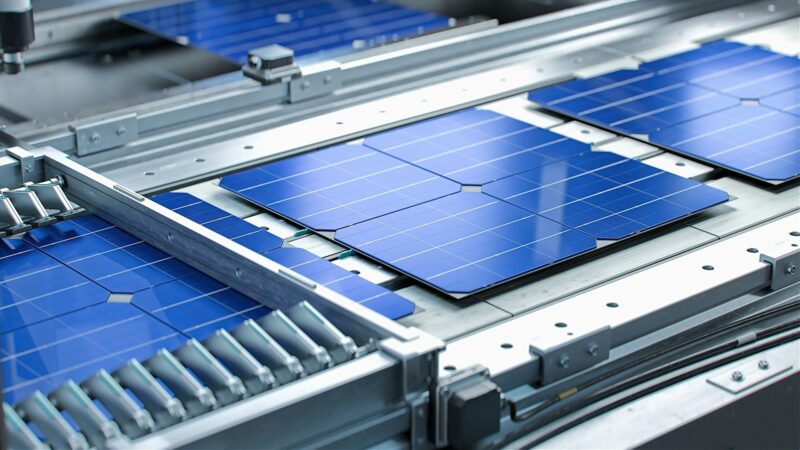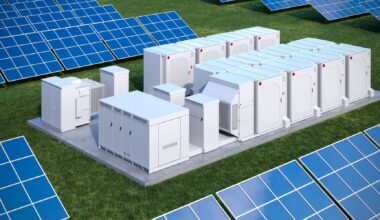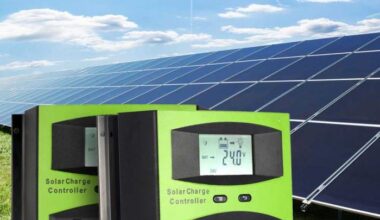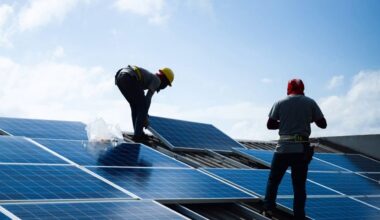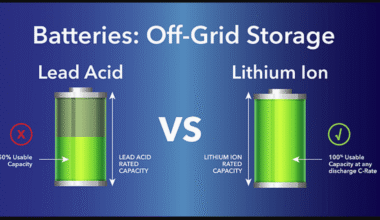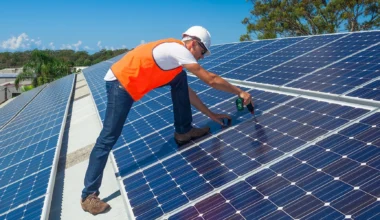AI in Solar Cell Manufacturing: Supercharging Advanced Solar Cell Production for Unmatched Efficiency
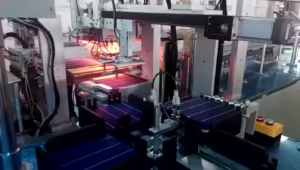
I’ve watched manufacturing evolve from manual assembly lines to fully automated smart factories. Today, one of the most transformative forces in manufacturing is artificial intelligence. In the solar industry, AI in Solar Cell Manufacturing is revolutionizing every step of production—from raw material inspection to module testing—driving unprecedented efficiency and quality improvements.
Artificial intelligence is no longer a futuristic buzzword; it’s a proven catalyst for scaling up solar cell production while reducing costs and waste. In this in‑depth guide, we’ll explore why AI in Solar Cell Manufacturing matters, how it works, practical implementation steps, real‑world success stories, and expert FAQs designed to capture featured snippets. Let’s dive in.
Introduction: Why AI in Solar Cell Manufacturing Matters
When I first walked onto a solar cell production line 25 years ago, the process was labor‑intensive and prone to variability. Manual visual inspections caught only obvious defects, and yield rates hovered around 80–85%. Fast forward to today: manufacturers leveraging AI in Solar Cell Manufacturing routinely surpass 95% yield, cut cycle times in half, and save millions on operational costs.
“By integrating machine learning models into our production line, we reduced defective cells by 60% within six months,” says Maria Gutierrez, Head of R&D at SolTech Innovations.
That dramatic improvement stems from AI’s ability to detect microscopic defects, predict equipment failures before they occur, and optimize process parameters in real time. As the global demand for solar energy continues to soar—projected to exceed 1 TW of new capacity annually by 2030—scalable, efficient manufacturing is critical. AI in Solar Cell Manufacturing is the bridge between traditional factories and tomorrow’s smart solar fabs, enabling manufacturers to meet demand without compromising on quality or profitability.
The Rise of AI in Solar Cell Manufacturing
From Manual to Smart Manufacturing
-
Early Days (Pre‑2010): Manual inspections, fixed process recipes, and periodic maintenance schedules.
-
Automation Wave (2010–2020): Introduction of robotics for wafer handling and basic process automation, but limited adaptability.
-
AI Era (2020–Present): Real‑time process monitoring, machine learning–driven quality control, and predictive analytics for maintenance and supply chain.
The shift toward AI‑driven manufacturing parallels broader Industry 4.0 trends. In solar cell production, AI tools ingest data from thousands of sensors—temperature, humidity, deposition rates, electrical parameters—and translate them into actionable insights. What used to take human operators hours of analysis now takes milliseconds, allowing the line to self‑adjust for optimal conditions.
Key Benefits of AI in Solar Cell Manufacturing
Implementing AI in Solar Cell Manufacturing yields tangible advantages:
-
Enhanced Quality Control
-
Defect Detection: AI image‑recognition models catch microcracks, contamination, and alignment issues with >99% accuracy.
-
Consistency: Automated decision rules ensure uniform cell performance, reducing in‑field failures.
-
-
Increased Throughput
-
Process Optimization: Machine learning algorithms identify optimal process recipes, shaving minutes off each production cycle.
-
Dynamic Scheduling: AI adjusts machine workloads in real time to minimize bottlenecks.
-
-
Cost Reduction
-
Lower Waste: Early defect detection prevents whole batches from being scrapped.
-
Predictive Maintenance: Forecasting equipment failures avoids unplanned downtime and expensive emergency repairs.
-
-
Energy Efficiency
-
Optimal Resource Use: AI fine‑tunes furnace temperatures and deposition rates, reducing energy consumption by up to 15%.
-
Sustainability Metrics: Continuous monitoring enables facilities to report and improve environmental performance.
-
-
Scalability
-
Modular AI Solutions: Cloud‑based AI platforms can be deployed across multiple fabs, standardizing performance globally.
-
Rapid Onboarding: New plants integrate AI tools with minimal customization, accelerating time‑to‑market.
-
How AI Works in Solar Cell Manufacturing
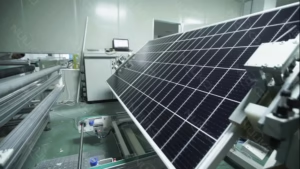
Read Also: Can AI Solve Africa’s Energy Crisis? What You Need to Know
Core AI Technologies in the Production Line
AI applications in solar manufacturing typically involve the following components:
-
Computer Vision Systems
-
High‑Resolution Cameras capture wafer and cell images at various stages.
-
Convolutional Neural Networks (CNNs) analyze images to detect defects invisible to the naked eye.
-
-
Machine Learning Models
-
Supervised Learning uses labeled defect datasets to train classifiers.
-
Unsupervised Learning identifies novel anomalies by clustering data patterns.
-
-
Real‑Time Data Analytics
-
IoT Sensors collect temperature, pressure, chemical concentration, and equipment status metrics.
-
Stream Processing Engines aggregate data for instant feedback loops.
-
-
Predictive Maintenance Algorithms
-
Time‑Series Analysis forecasts wear and tear on critical components (e.g., furnaces, robots).
-
Anomaly Detection flags irregular patterns long before visible failures.
-
-
Optimization Engines
-
Reinforcement Learning continuously tunes process parameters for maximum yield.
-
Digital Twins simulate production lines virtually to test new configurations without disrupting operations.
-
Defect Detection with Computer Vision
Imagine a high‑speed web of wafers passing under a camera at 1 meter per second. AI‑powered vision systems capture thousands of images per second, comparing each pixel against learned templates. When a scratch or contaminant deviates from the template beyond a defined threshold, the system automatically diverts that wafer for manual review or reprocessing. This level of screening simply wasn’t possible with manual inspections.
Predictive Maintenance in Action
Instead of adhering to fixed maintenance schedules, AI in Solar Cell Manufacturing continuously monitors equipment vibration, temperature fluctuations, and throughput rates. If a furnace’s thermal profile drifts outside the normal range, the AI flags it and schedules a maintenance ticket—often before any noticeable degradation in cell quality occurs. The result? Equipment uptime improves from around 85% to over 95%.
Process Optimization through Reinforcement Learning
Reinforcement learning agents experiment with process variables—such as deposition time or dopant concentration—within safe bounds. Over thousands of iterations, the AI discovers parameter sets that maximize cell efficiency and yield. These optimizations accumulate over time, continuously raising the bar for production performance.
Step‑by‑Step Guide: Implementing AI in Solar Cell Manufacturing
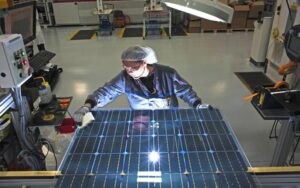
Transitioning to AI‑driven operations requires careful planning and execution:
Step 1 – Define Your Objectives
-
Focus Areas: Quality control, yield improvement, energy reduction, maintenance cost savings.
-
Key Metrics: Defect rate, equipment uptime, cycles per hour, energy consumption per wafer.
Step 2 – Audit Your Current Processes
-
Conduct a process baseline assessment to document existing performance metrics.
-
Inventory data sources: vision systems, sensors, ERP logs, maintenance records.
Step 3 – Select the Right AI Platform
-
Choose between on‑premises vs. cloud‑based solutions, considering data security and latency requirements.
-
Ensure compatibility with existing MES (Manufacturing Execution Systems) and SCADA architectures.
Step 4 – Prepare Your Data
-
Implement data cleansing to remove noise and correct inconsistencies.
-
Label images and sensor data for supervised learning tasks.
-
Establish data pipelines for continuous feeding into AI models.
Step 5 – Develop and Train Models
-
Collaborate with AI experts to design CNNs for vision tasks and time‑series models for maintenance.
-
Use cross‑validation and A/B testing to refine model accuracy.
-
Continuously expand training datasets with new defect samples and operational scenarios.
Step 6 – Integrate and Deploy
-
Deploy models at the edge (on equipment) or in the cloud, depending on data-processing needs.
-
Build dashboards to visualize AI insights for operators and managers.
-
Define alert thresholds and automated workflows for defect handling and maintenance scheduling.
Step 7 – Monitor, Evaluate, and Iterate
-
Track KPIs such as defect reduction percentage, uptime improvement, and energy savings.
-
Solicit operator feedback to refine alert parameters and user interfaces.
-
Plan for periodic retraining as new defect types emerge or production lines change.
Real‑World Examples: Success Stories in AI‑Driven Solar Manufacturing
Case Study 1 – SolTech Innovations
By integrating a cloud‑based AI vision platform, SolTech Innovations:
-
Reduced defect rates by 62% in the first quarter.
-
Achieved 95.3% average yield, up from 87.8%.
-
Saved $1.2M annually in scrap reduction and rework costs.
Case Study 2 – SunWave Solar
SunWave implemented predictive maintenance powered by machine learning:
-
Increased equipment uptime from 88% to 96%.
-
Cut emergency maintenance costs by 40%.
-
Boosted annual production capacity by 5 GWh without new capital expenditure.
Case Study 3 – GreenForge Manufacturing
Using reinforcement learning for process optimization:
-
Enhanced cell conversion efficiency by 1.4 percentage points.
-
Shortened cycle times by 18%, enabling an extra shift’s worth of output per week.
-
Reported a 20% reduction in energy consumption per wafer processed.
Frequently Asked Questions (FAQs)
Q1: What is AI in Solar Cell Manufacturing?
AI in Solar Cell Manufacturing refers to the application of artificial intelligence—such as computer vision, machine learning, and predictive analytics—to enhance every stage of solar cell production, from raw material inspection to module testing.
Q2: How does AI improve quality control?
AI-based vision systems detect microscopic defects on wafers and cells with greater accuracy and speed than human inspectors, dramatically reducing defective output and warranty claims.
Q3: What data is needed for AI models?
Essential data includes high-resolution images of wafers at multiple production stages, sensor readings (temperature, pressure, chemical concentrations), equipment logs, and historical maintenance records.
Q4: Is AI implementation expensive?
While initial investment varies, most manufacturers recoup costs within 6–12 months through reduced scrap, lower maintenance expenses, and higher throughput. Cloud‑based AI solutions can lower upfront CAPEX.
Q5: Can small-scale manufacturers benefit?
Absolutely. Modular, pay‑as‑you‑go AI platforms allow even mid‑sized fabs to adopt AI gradually, starting with one process area (e.g., defect detection) and scaling over time.
Q6: What are the challenges of adopting AI?
Common hurdles include:
Ensuring data quality and consistency
Integrating AI with legacy MES/SCADA systems
Training staff to interpret AI insights and adjust workflows
Conclusion: Embracing the AI Advantage
The solar industry is at a pivotal juncture. Global capacity targets demand not just more panels but smarter manufacturing. AI in Solar Cell Manufacturing isn’t a luxury—it’s a strategic imperative. By harnessing computer vision for near‑perfect quality control, machine learning for predictive maintenance, and reinforcement learning for continuous process optimization, manufacturers can achieve:
-
Unmatched Efficiency: Maximize throughput while minimizing waste.
-
Superior Quality: Deliver reliable, high‑performance solar cells that outperform market standards.
-
Sustainable Growth: Scale operations rapidly without proportionally increasing costs or energy usage.
Whether you’re running a large‑scale fab or a boutique module shop, the AI revolution offers tangible, fast‑payback benefits. The journey begins by defining clear objectives, auditing your processes, and choosing the right AI partners. From there, iterative deployment and continuous monitoring pave the way to a future where solar cells roll off the line with consistent excellence—and your bottom line soars.
Ready to supercharge your production? Embrace AI in Solar Cell Manufacturing today, and lead the charge toward a cleaner, brighter, and more efficient solar-powered world.
